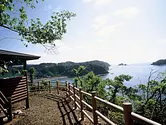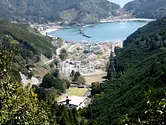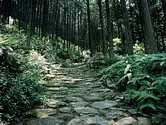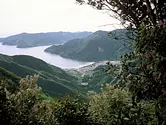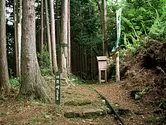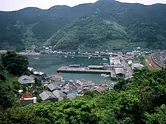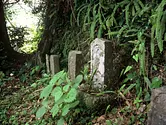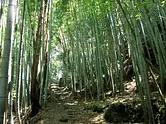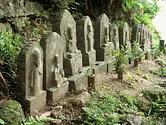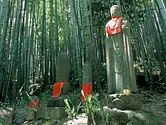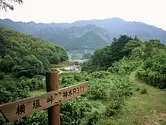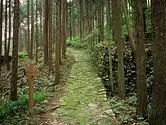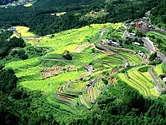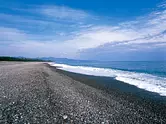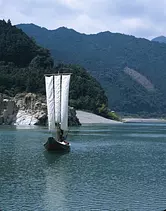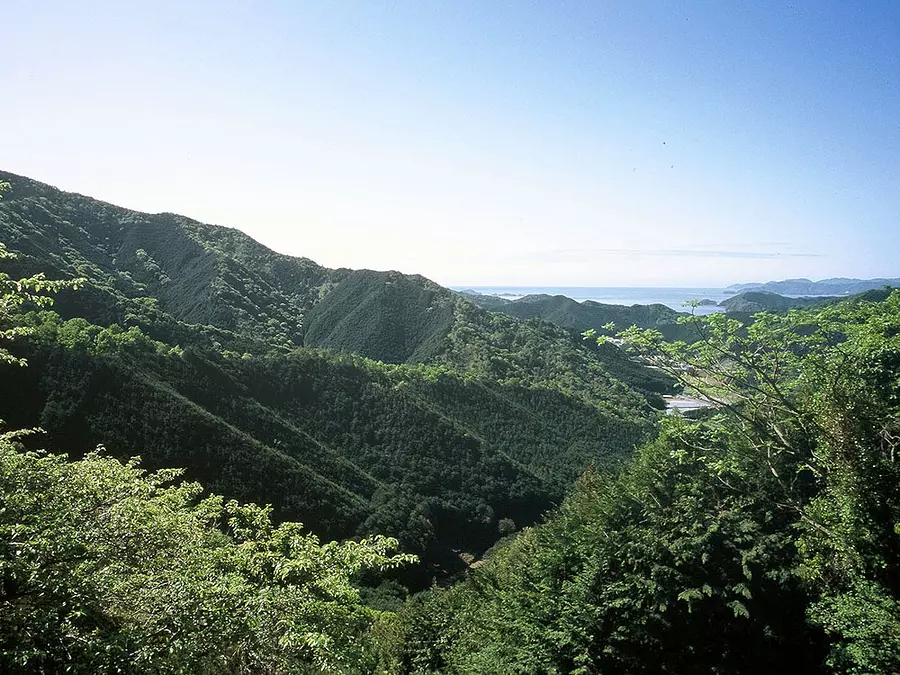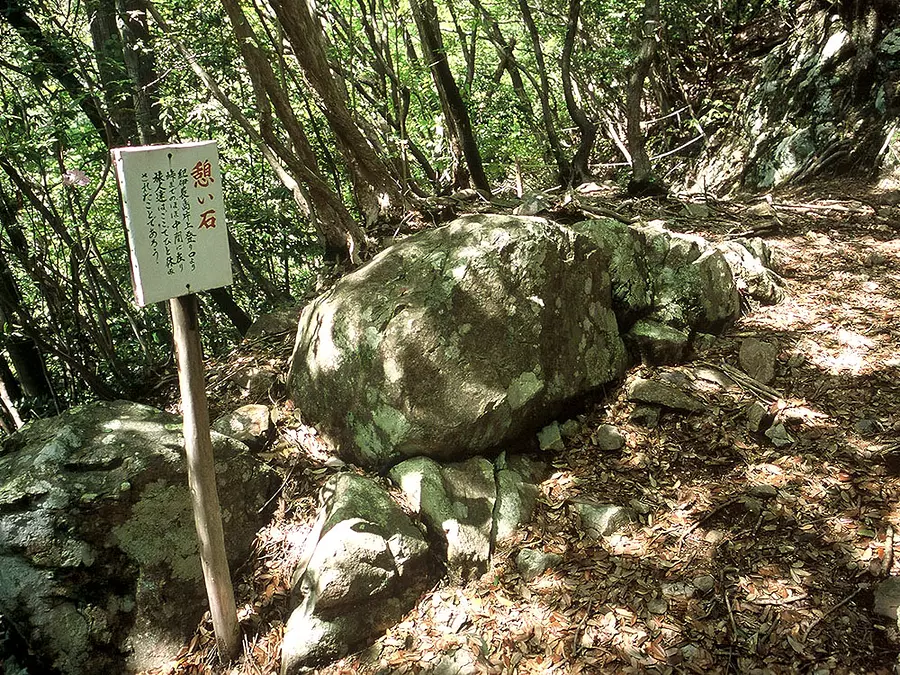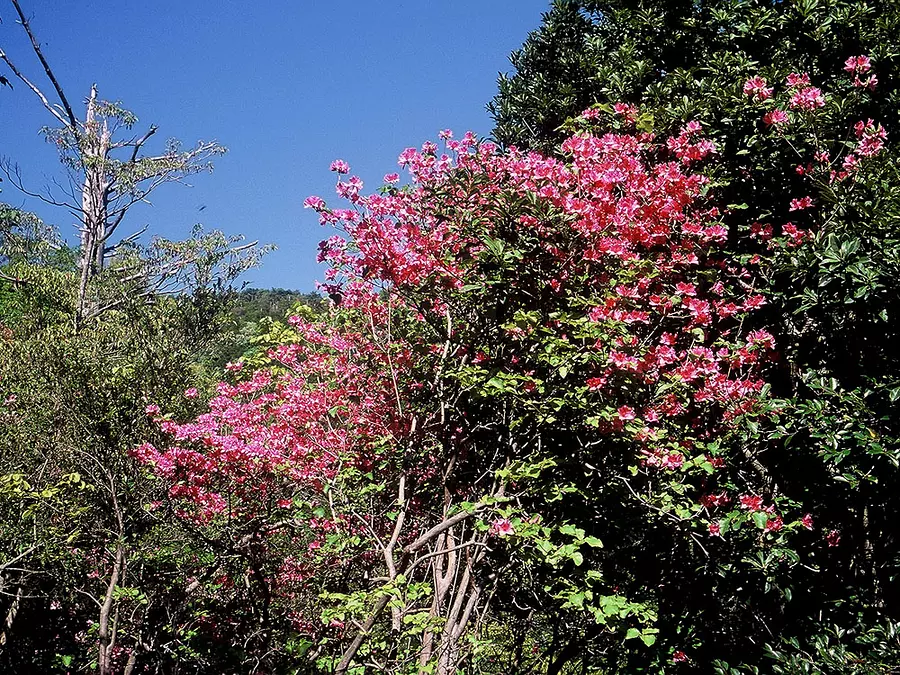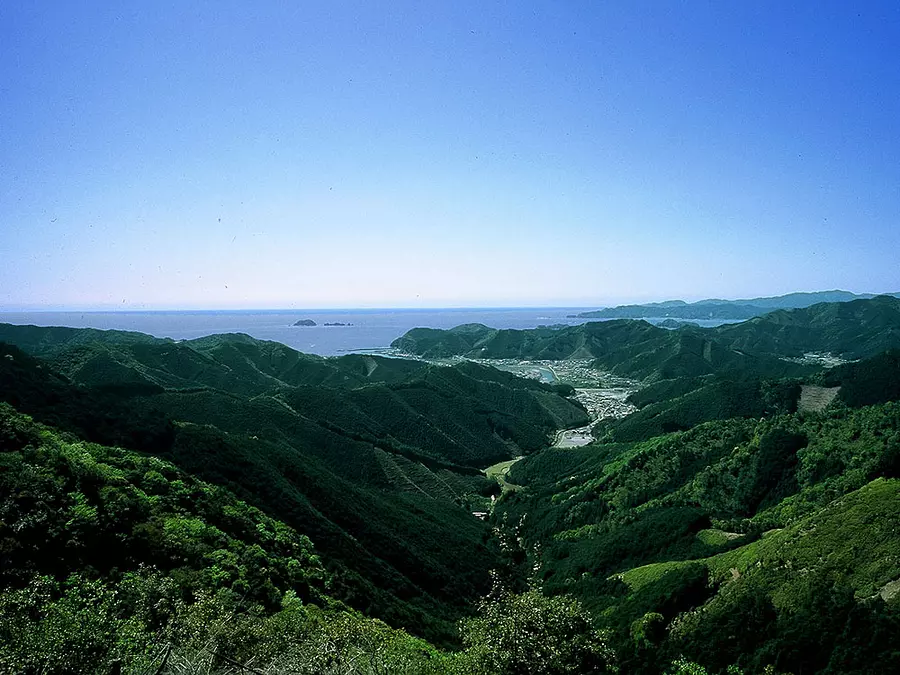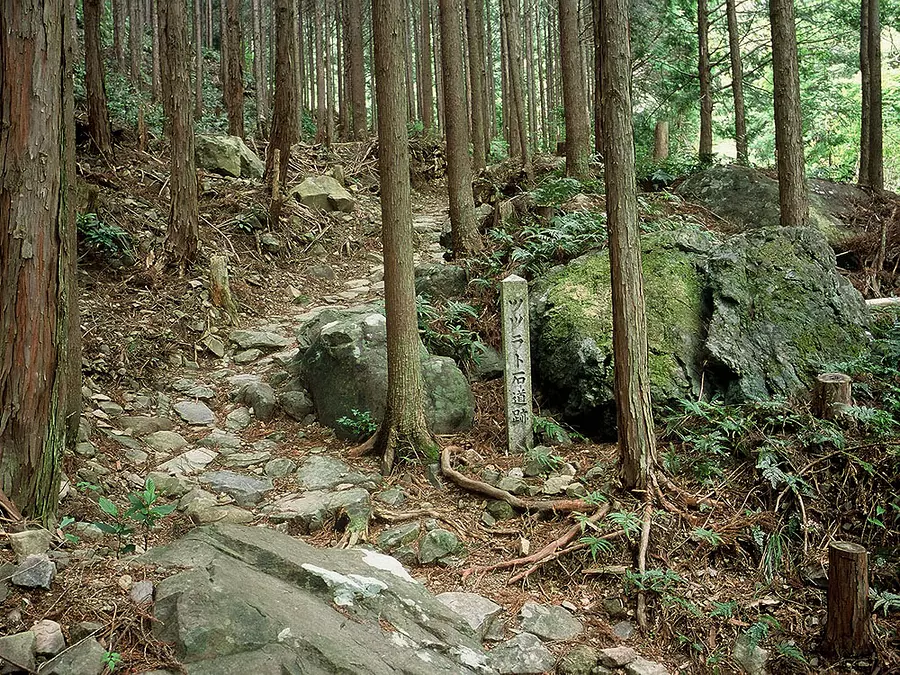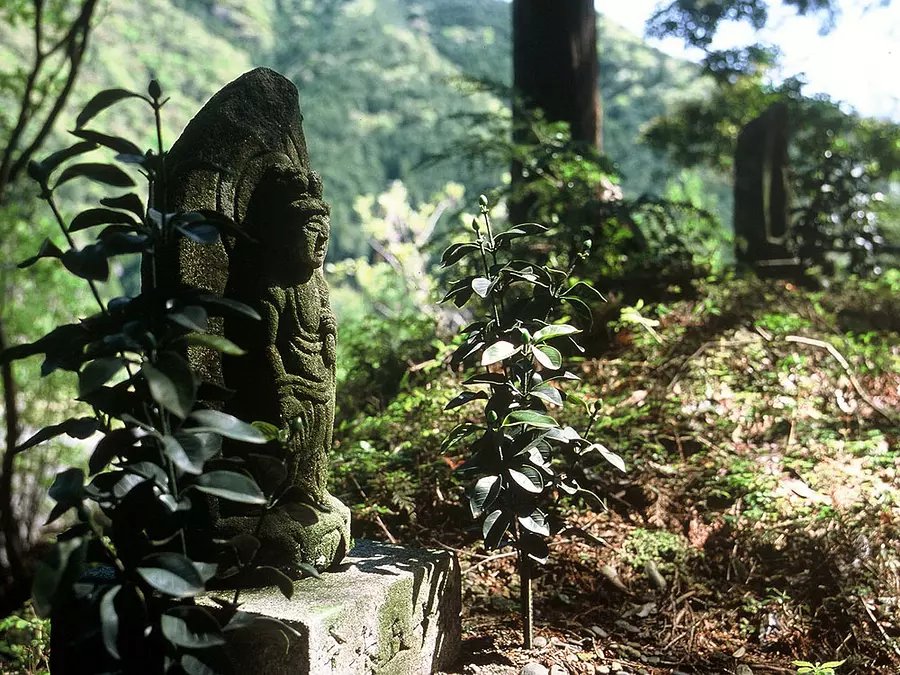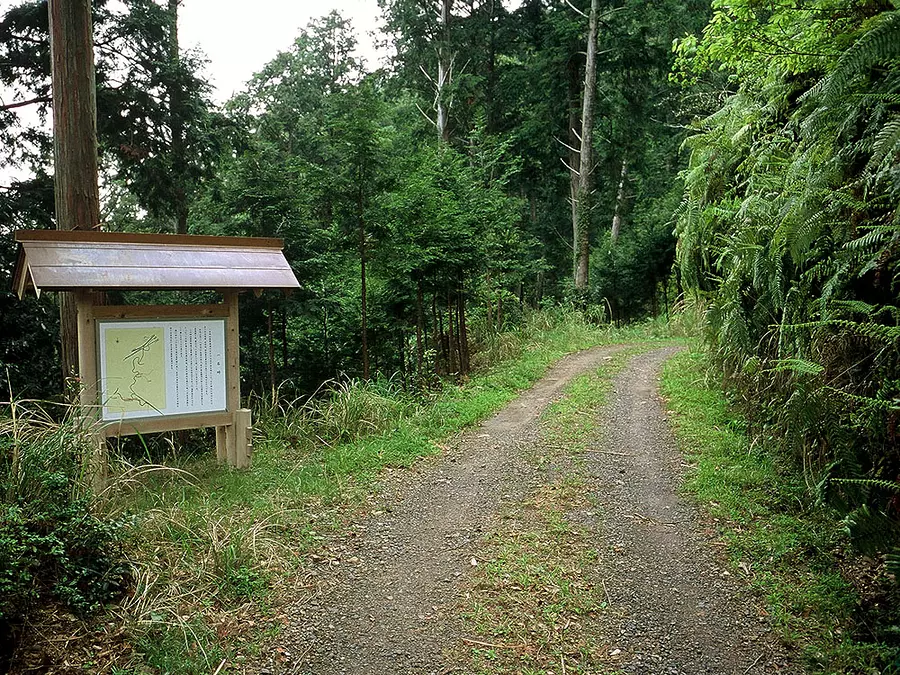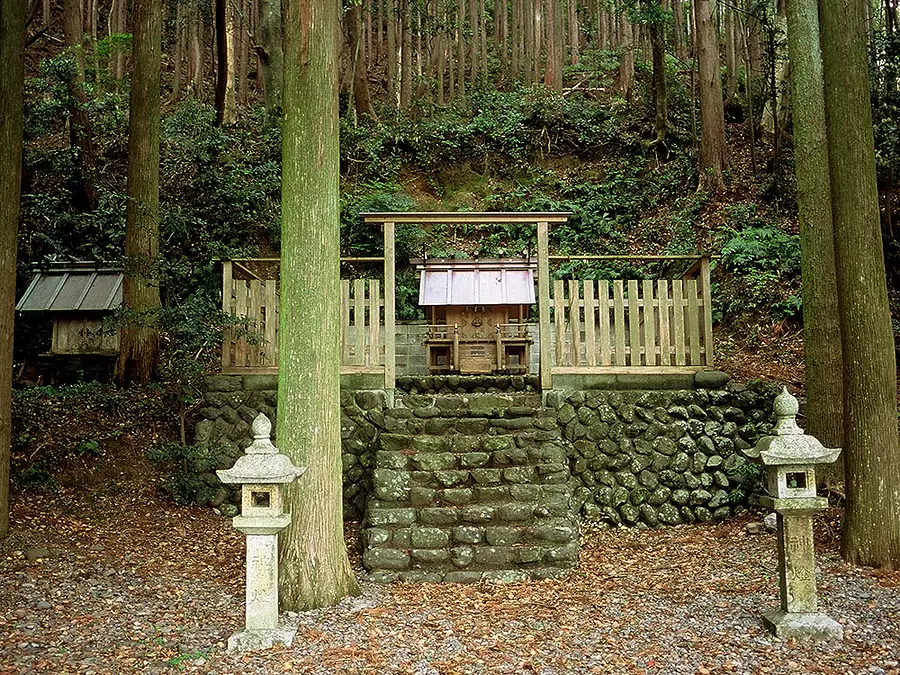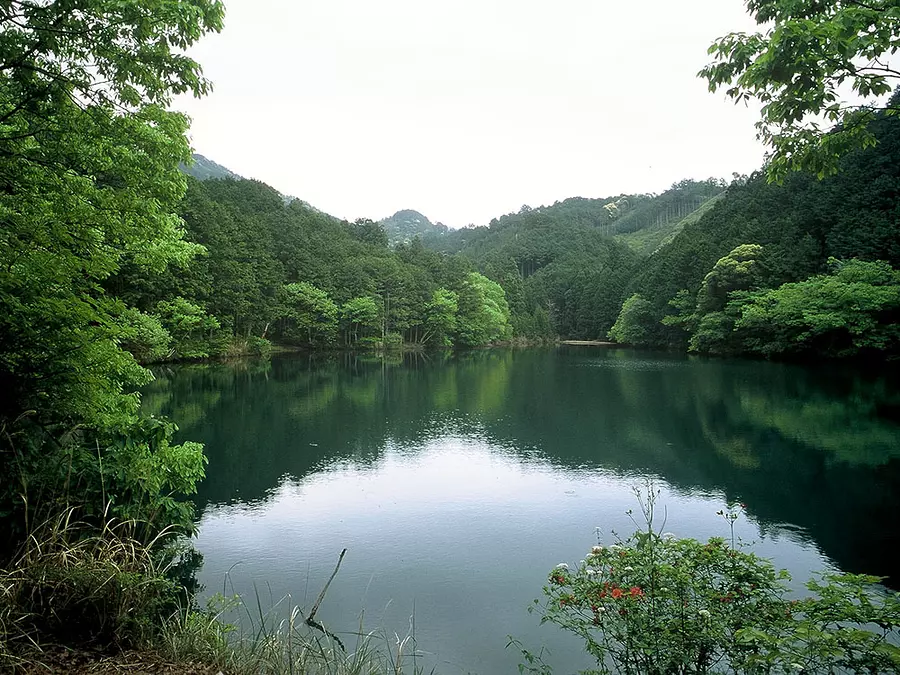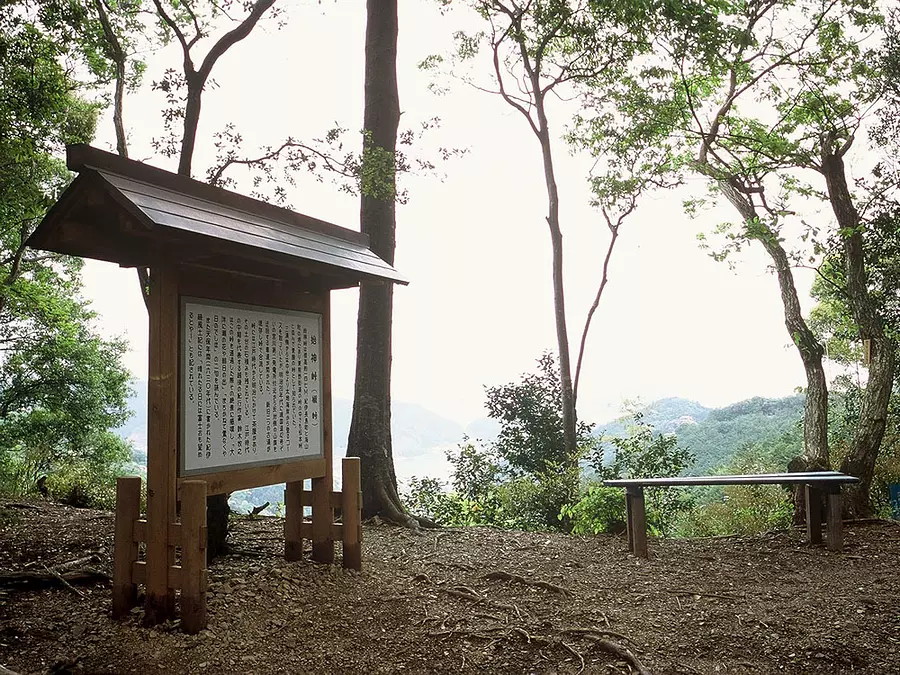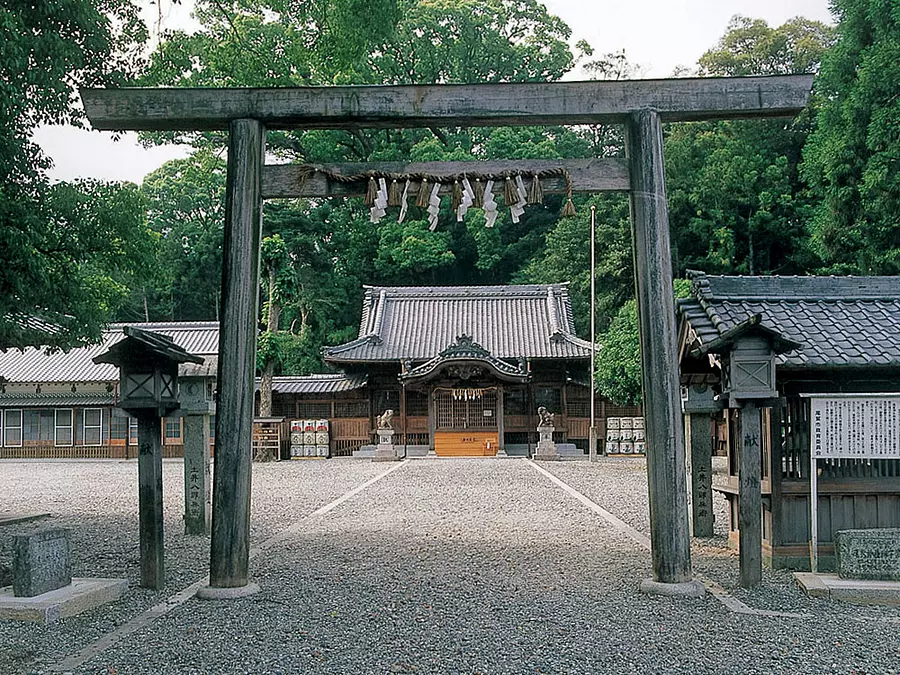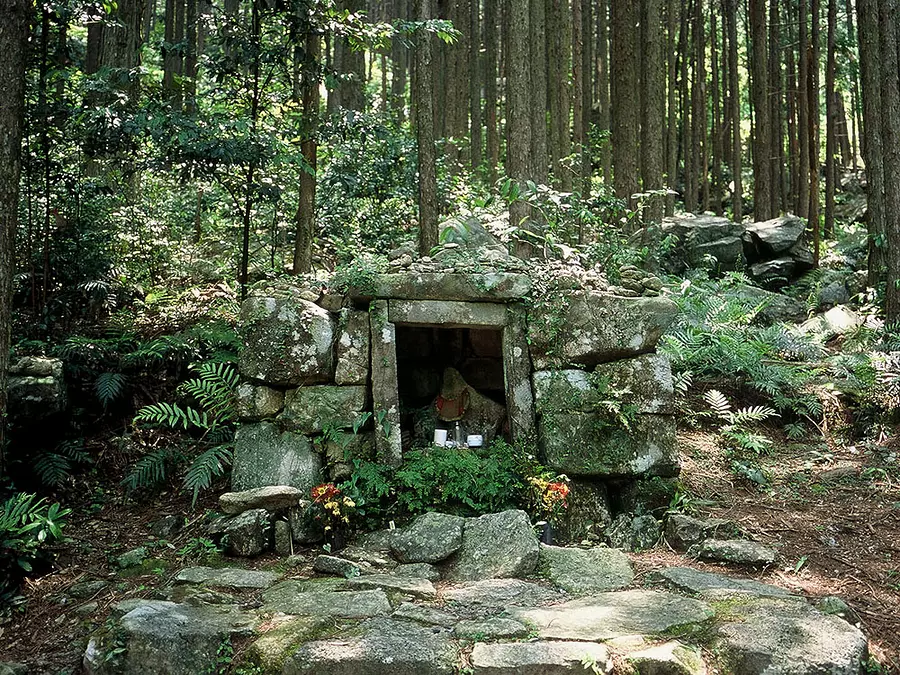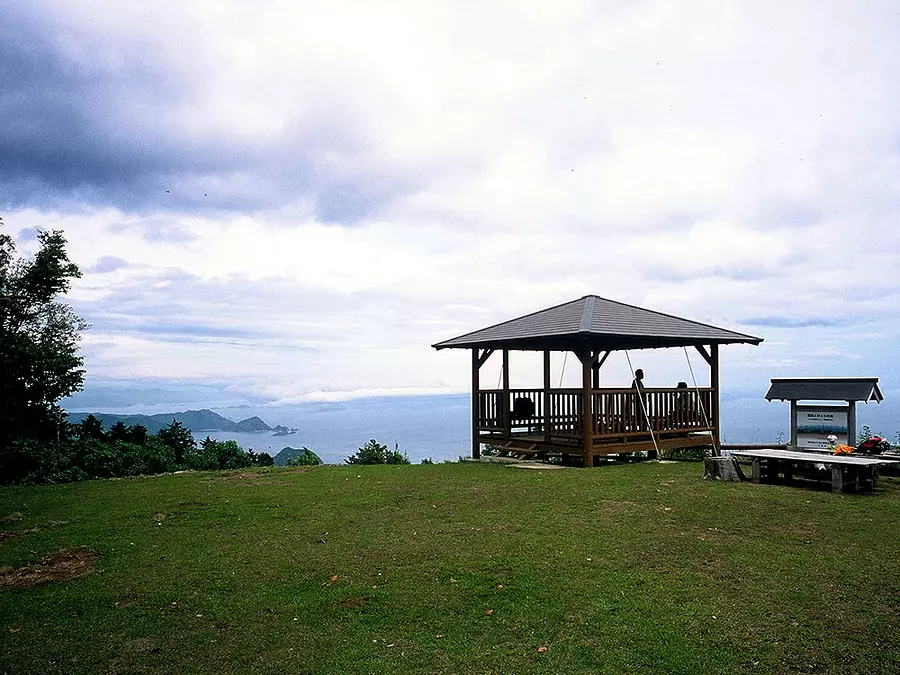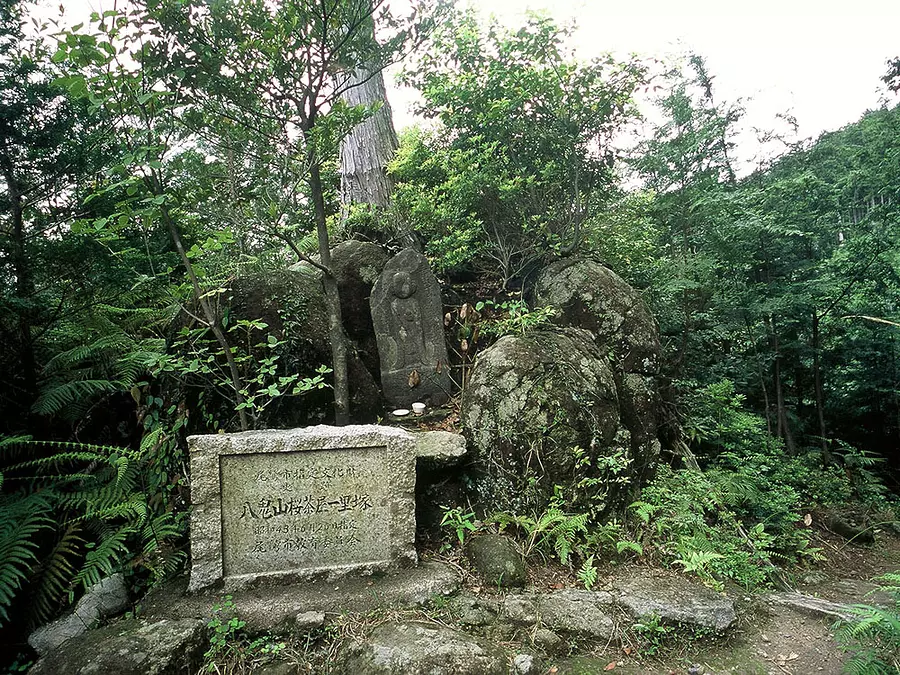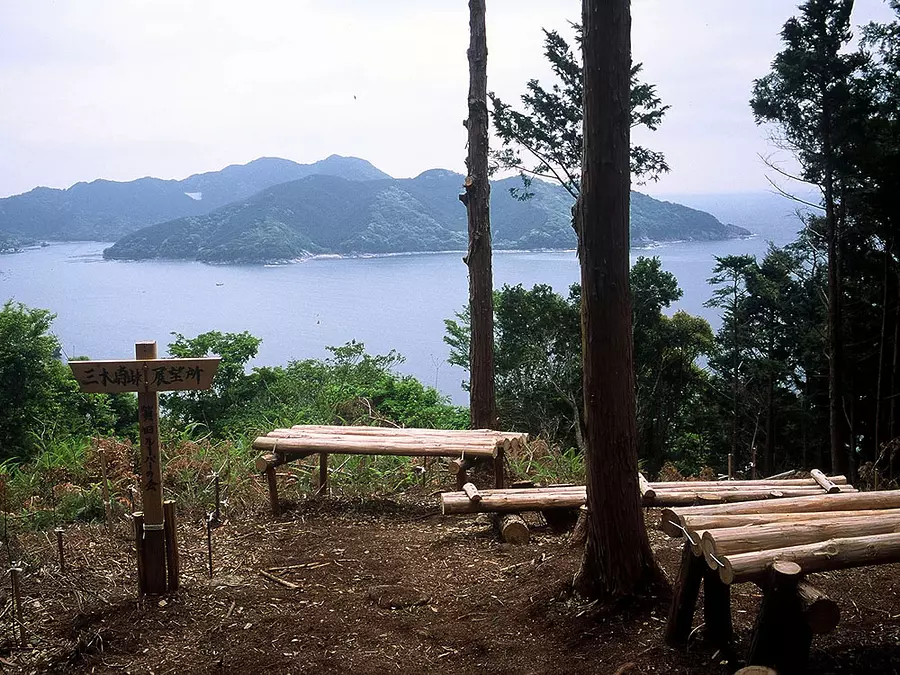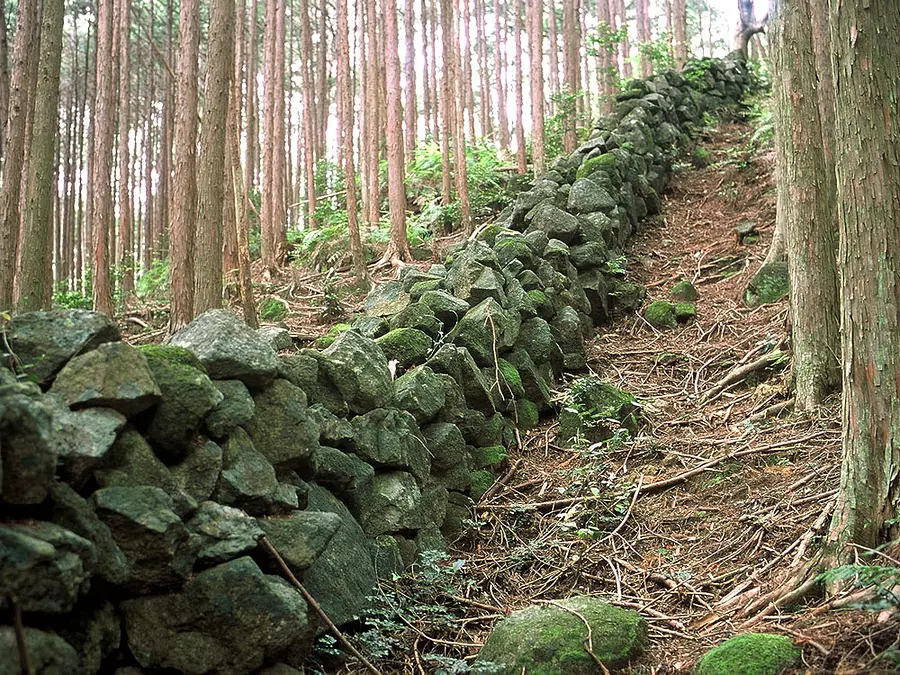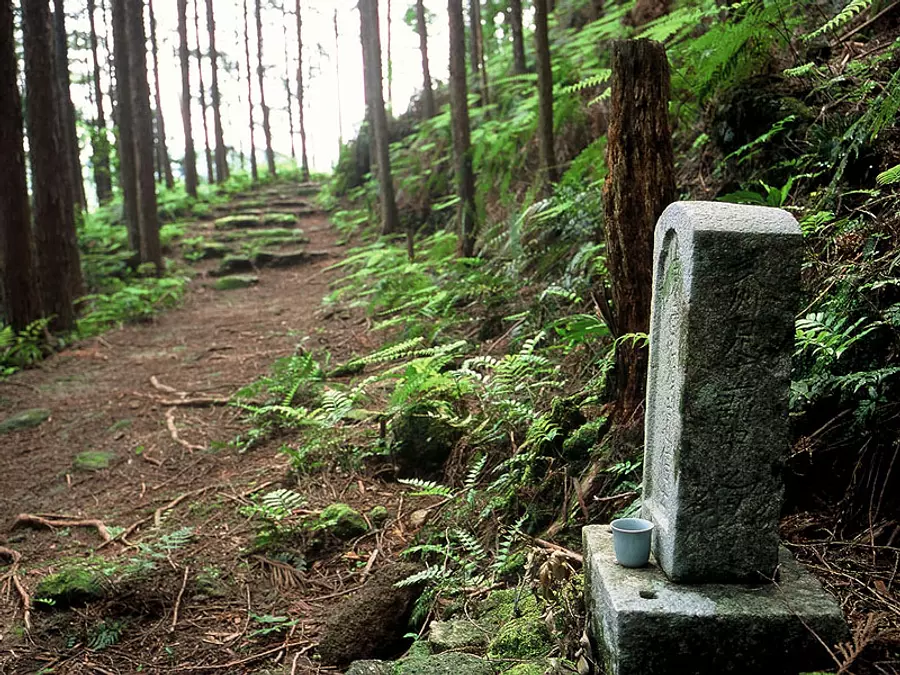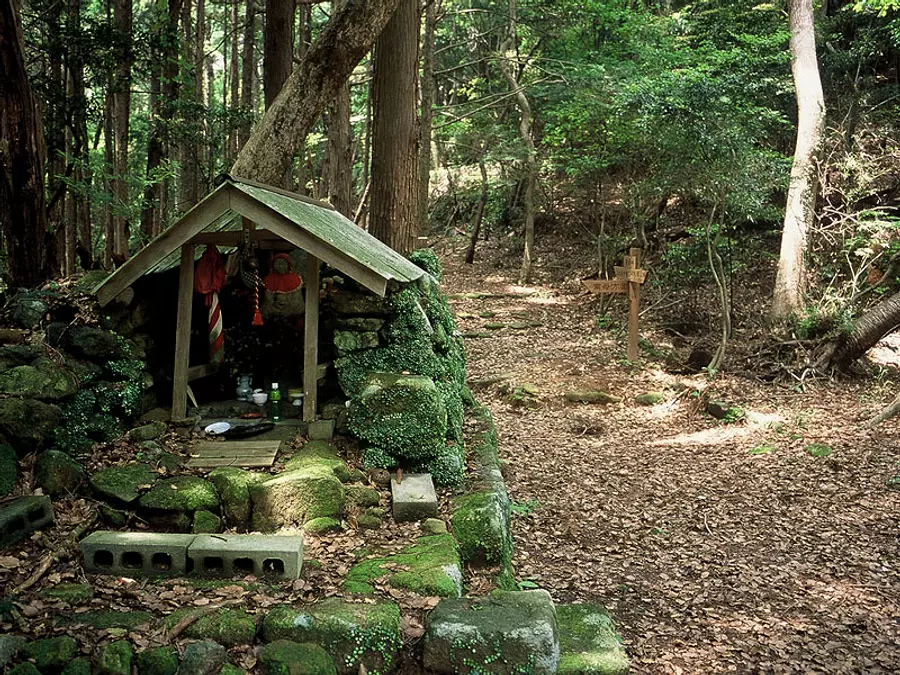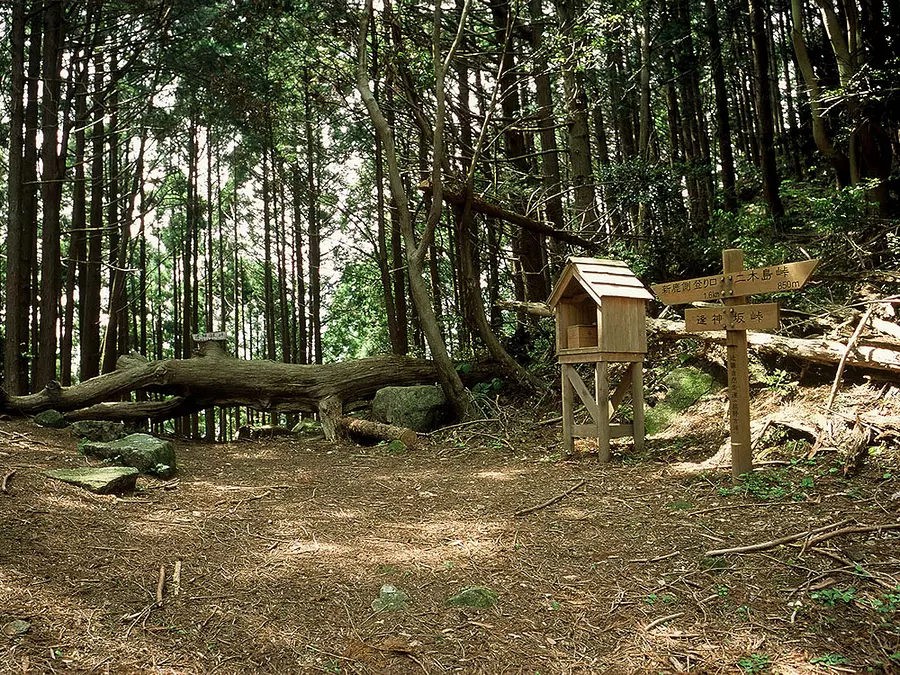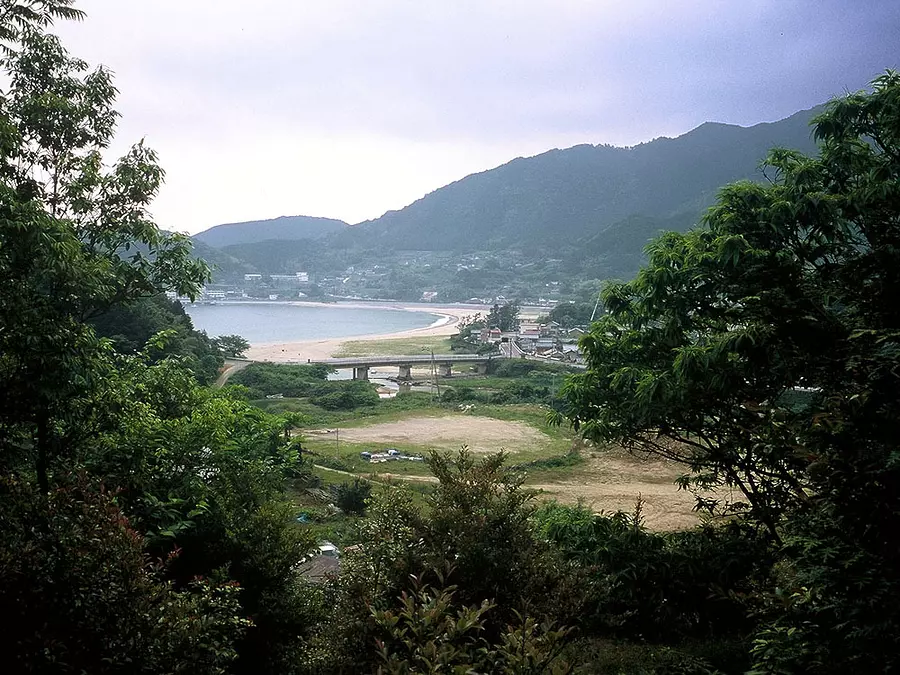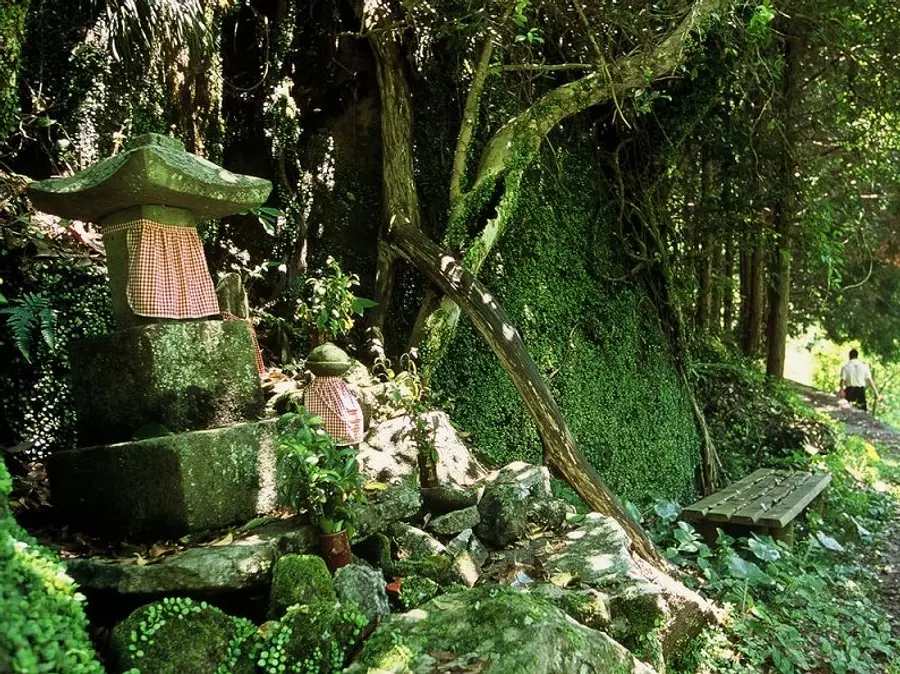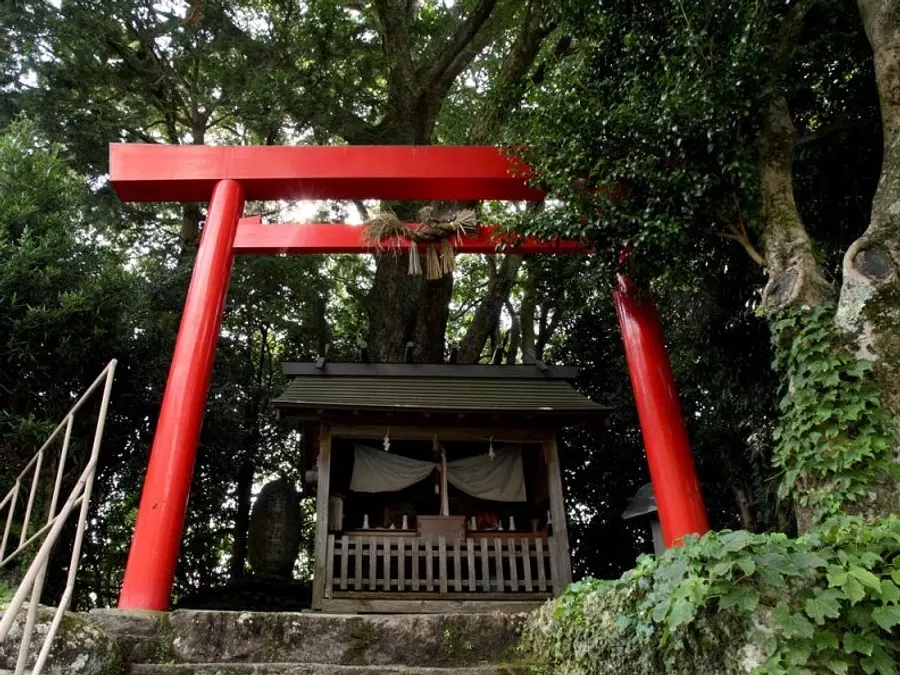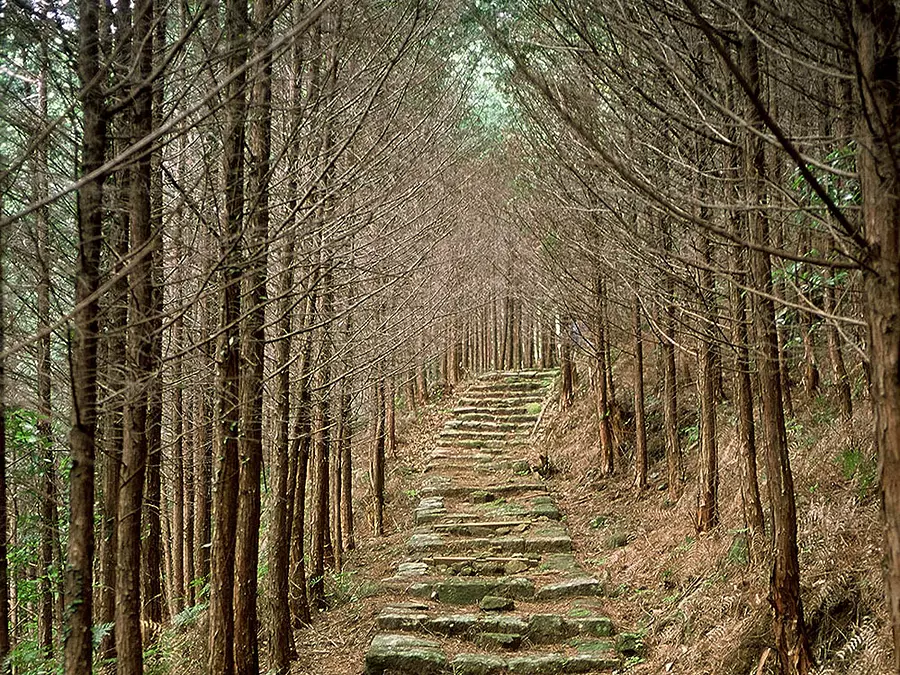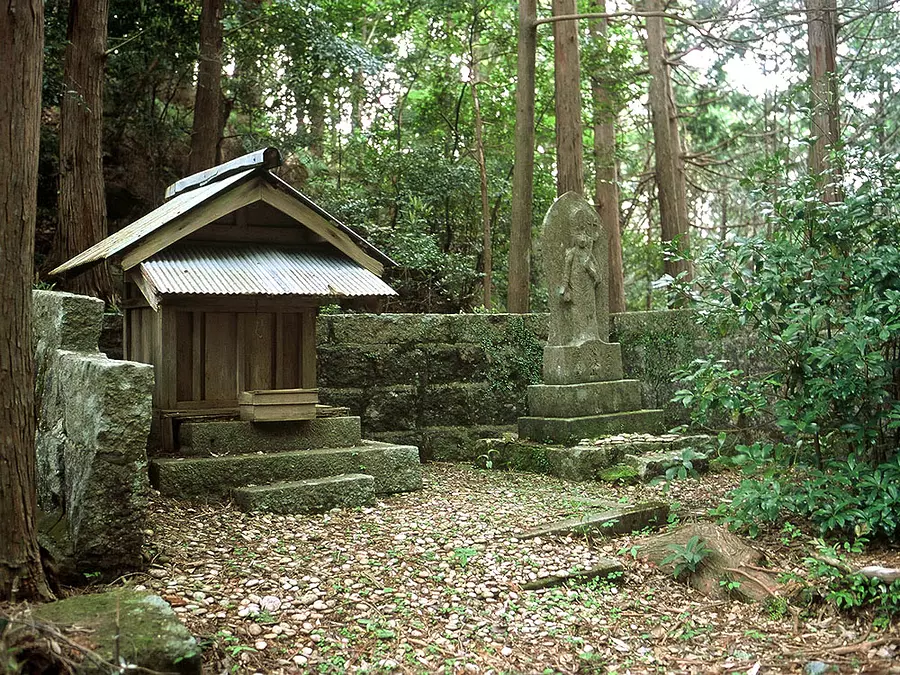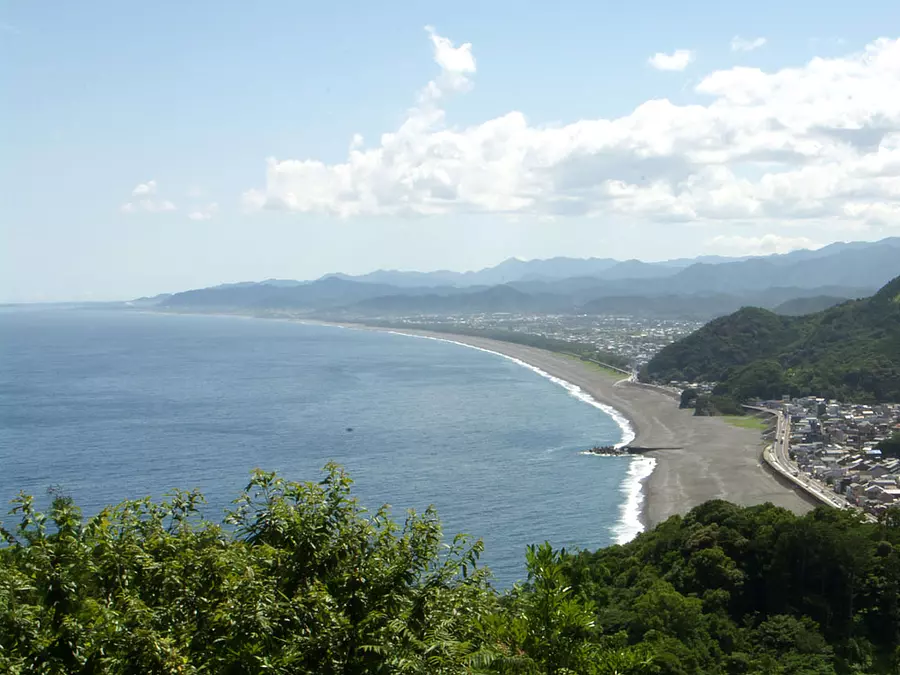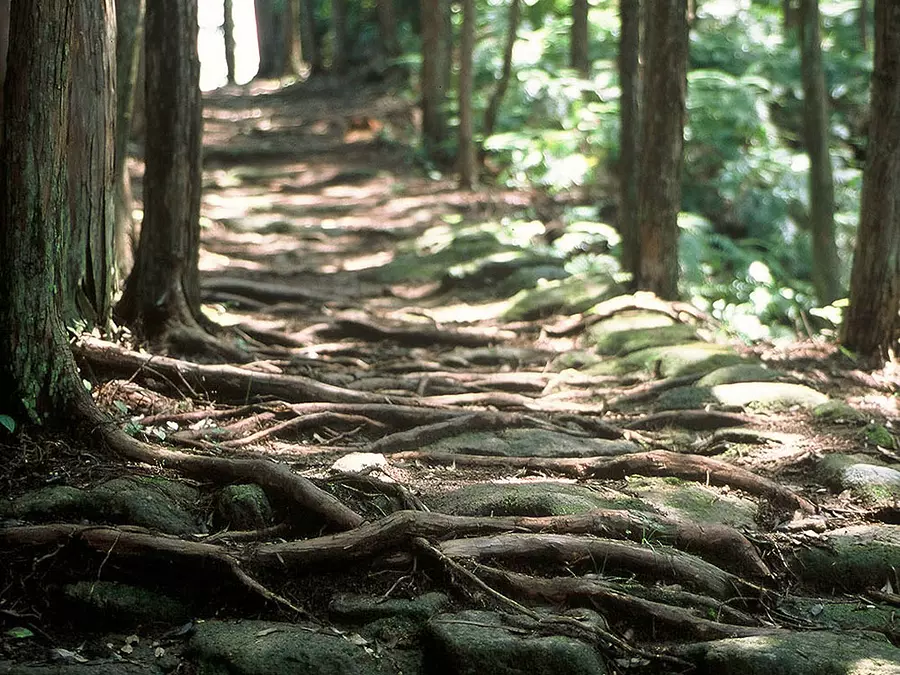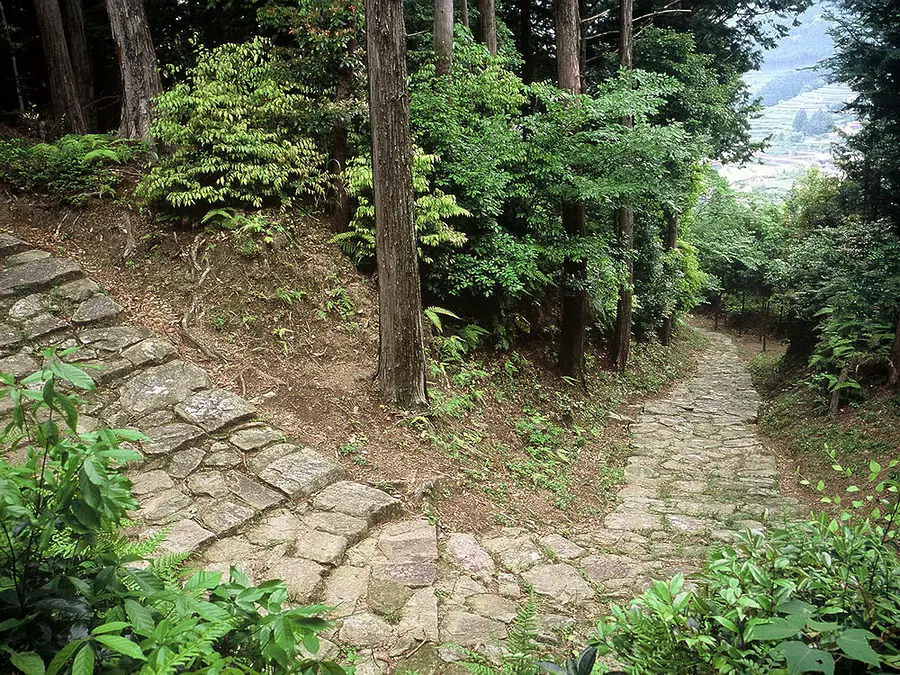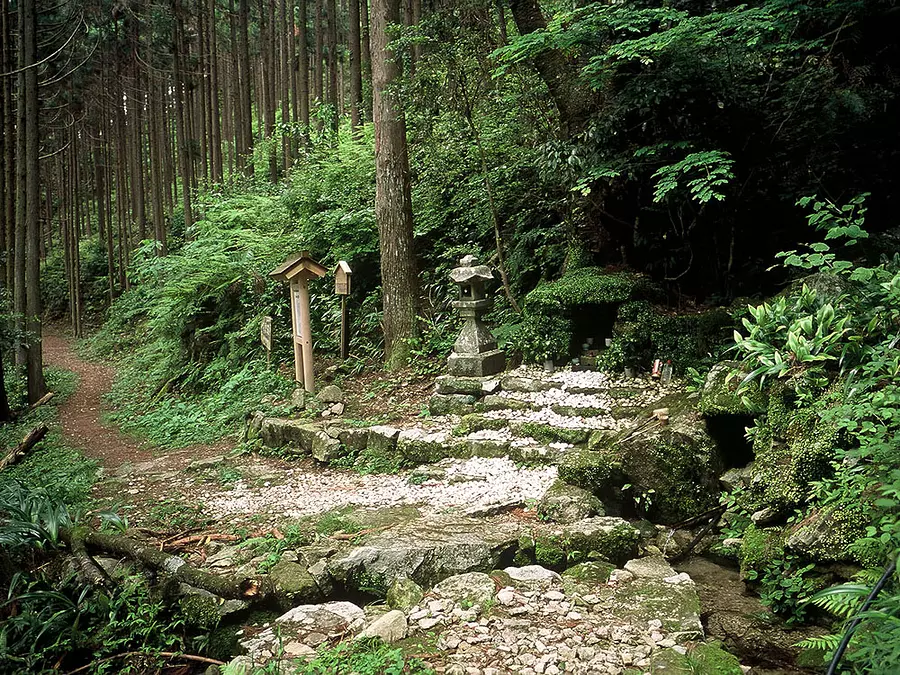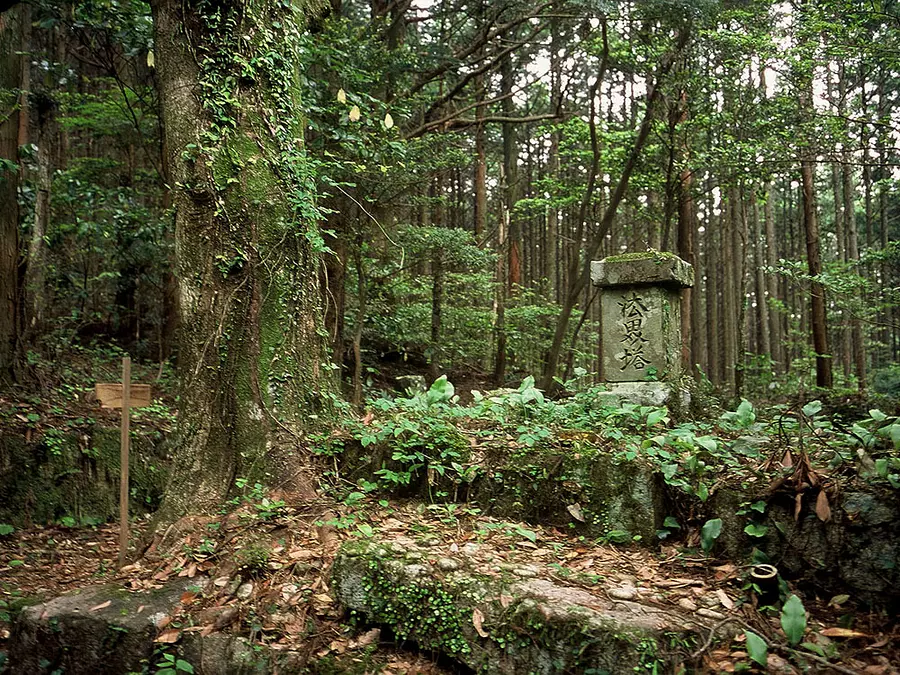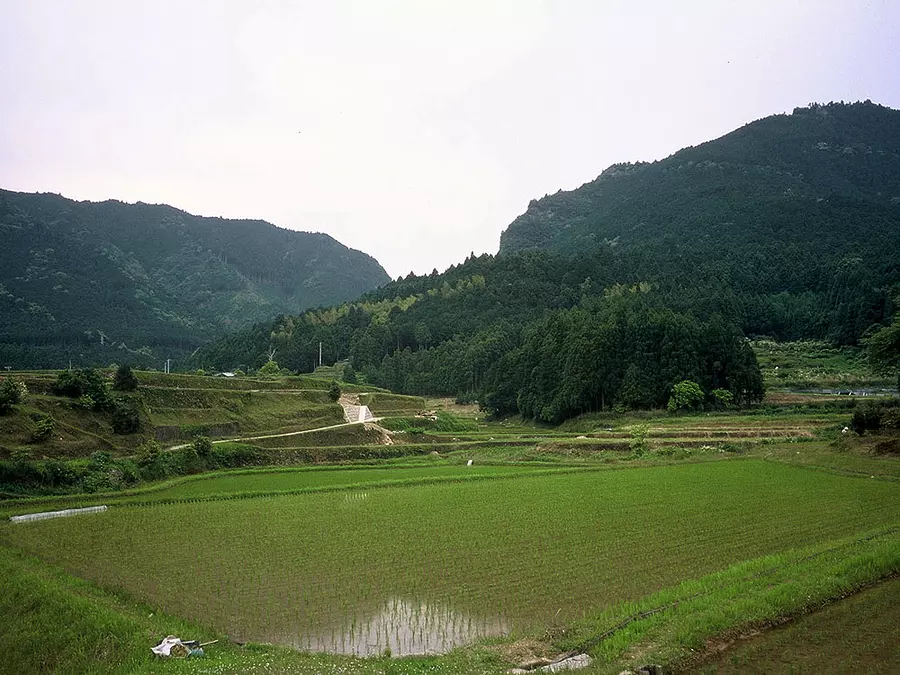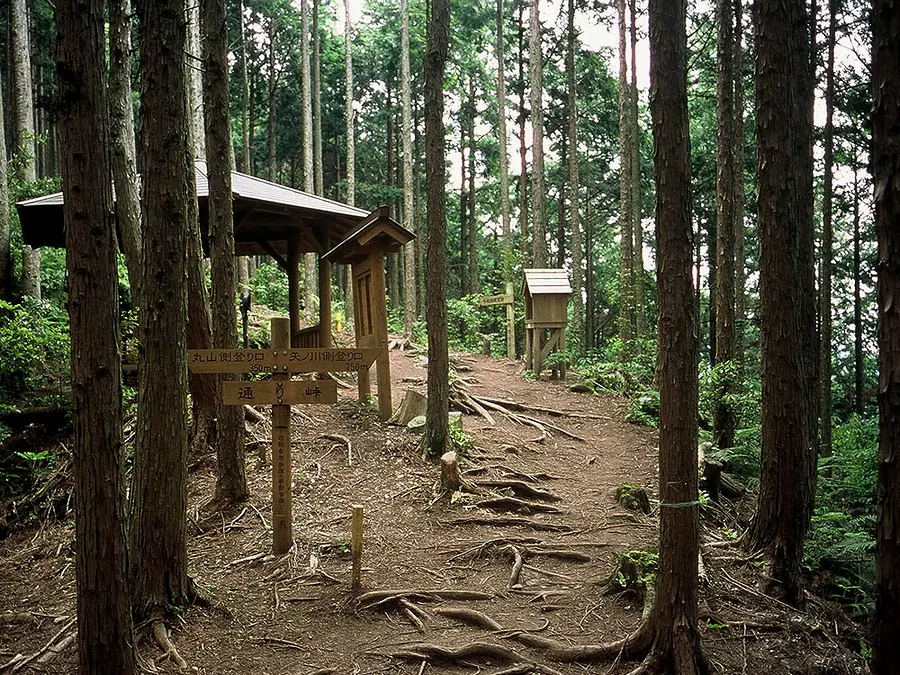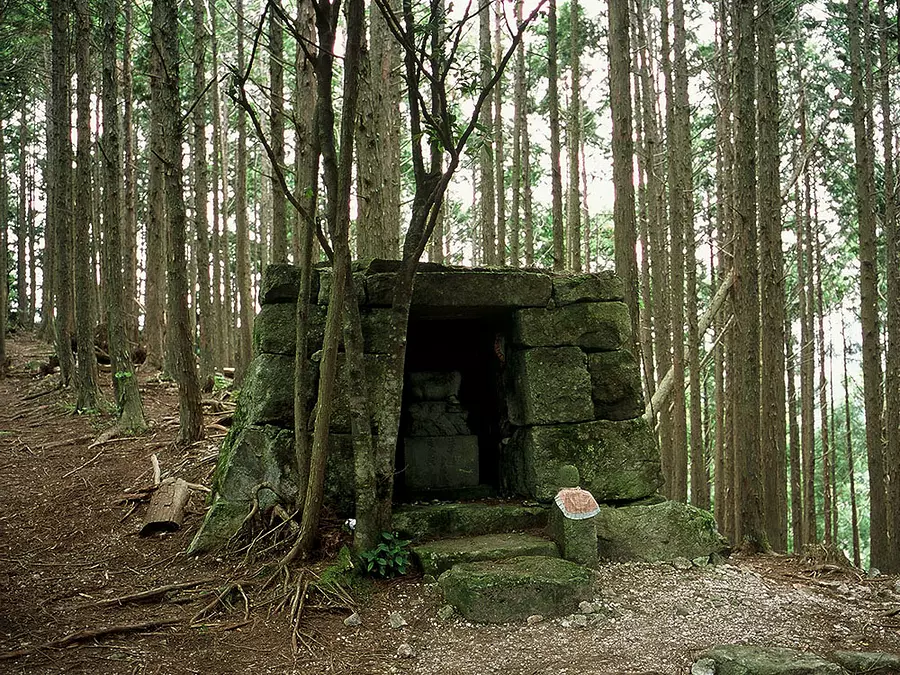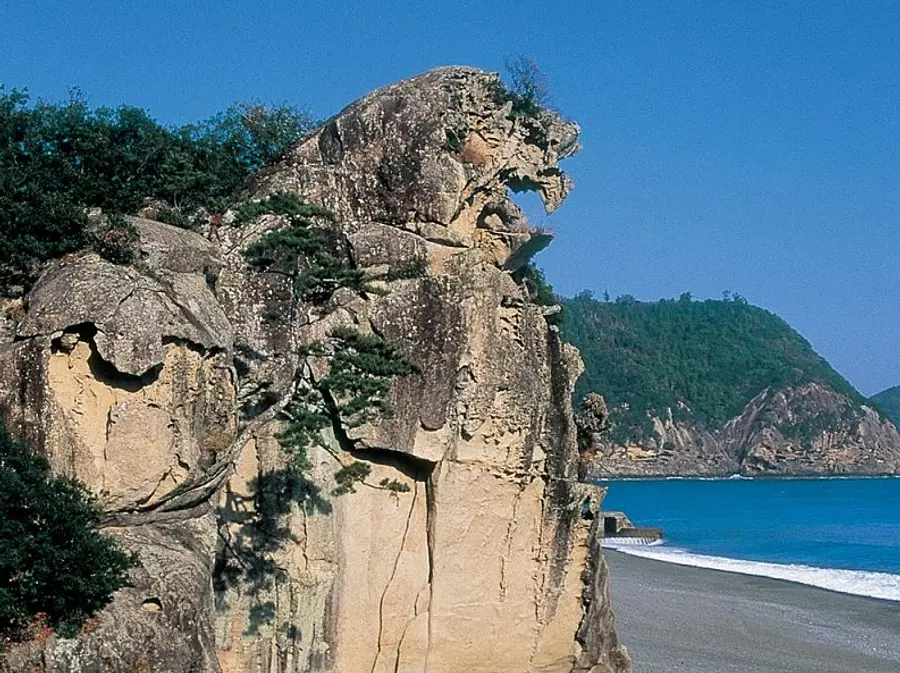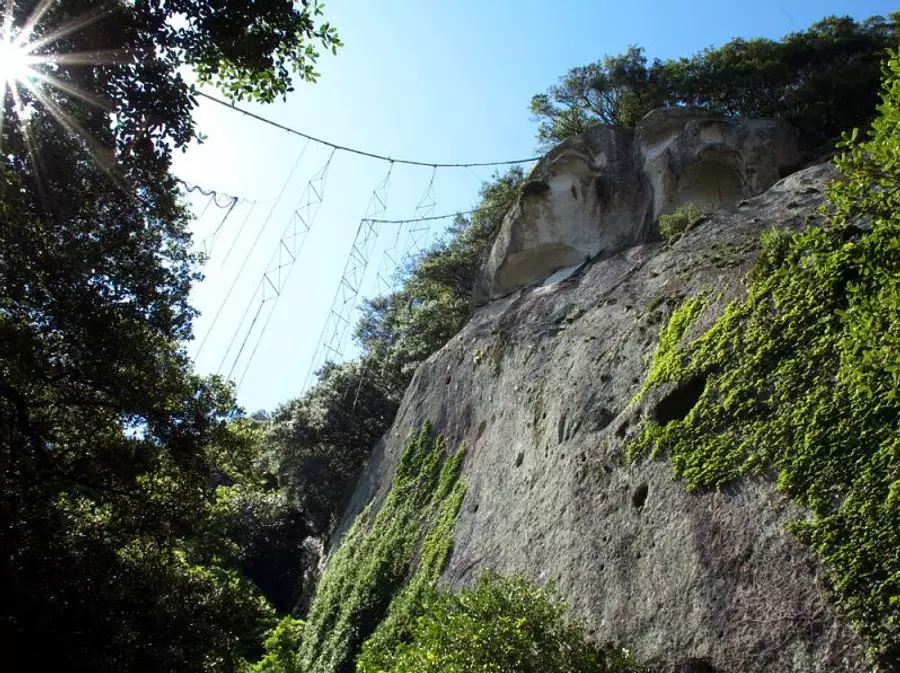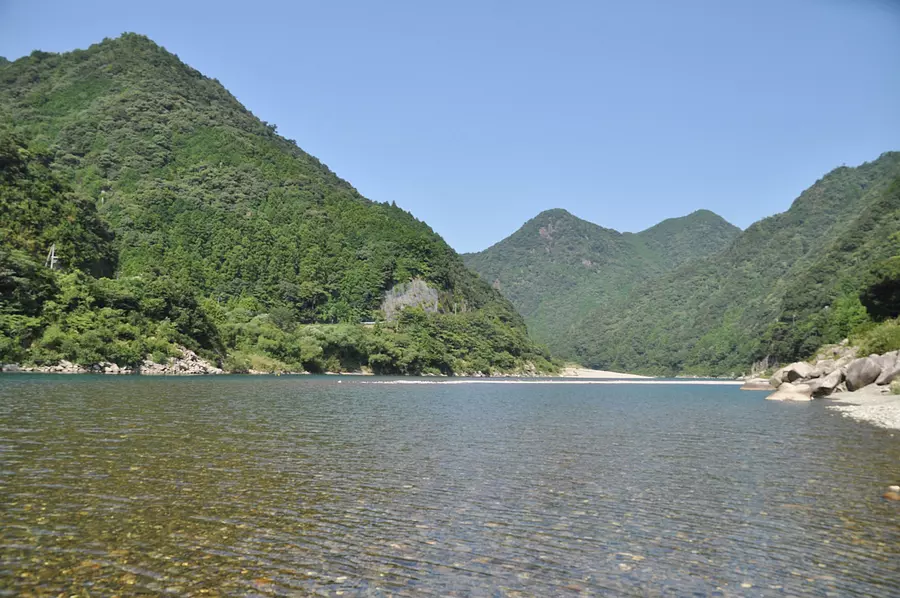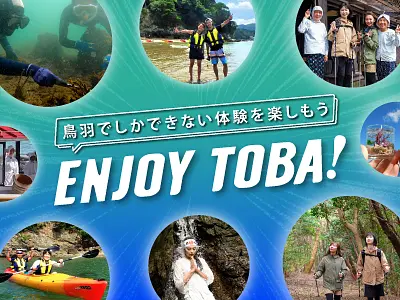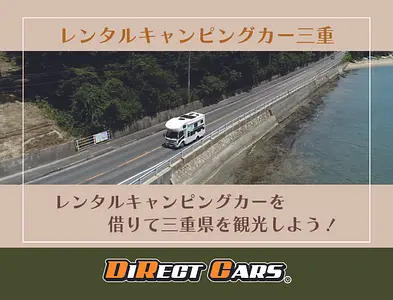Kumano Kodo Iseji - Sacred sites and pilgrimage routes in the World Heritage Kii Mountains -
掲載日:2013.01.04

Click here for the Kumano Kodo Iseji special page
The sacred sites of the Kumano Sanzan, Yoshino/Omine, and Mt. Koya, and the pilgrimage routes leading to them, were created through the fusion of Japan's ancient faith in nature and Buddhism, which was introduced from the continent, and had a great influence on the development of Japanese culture. . These points were highly evaluated, and in 2004, it was registered as a World Heritage Site as a ``Sacred Site and Pilgrimage Route in the Kii Mountain Range.''
The Kumano Kodo (Iseji) from Ise to Kumano, which has been known since the Heian period and became especially popular after the Edo period, is the route taken by travelers who have completed the Ise Shrine and by pilgrims who have visited the 33 sites in the Saigoku region. The path of the common people. This is a road where travelers, dressed in pilgrim costume, cross many steep mountain passes to reach Kumano, the land of their dreams.
index
Kasaka Pass (Taiki Town, TaikiTown)
A mountain pass between TaikiTown and KihokuTown. From the early to mid-Edo period, it became the official gateway to Kishu, replacing TsuZurato-togePass, following the entry of Lord Tokugawa Yorinobu. Current National Route 42 and JR Kisei Line also cross the Kasaka Pass.
The road is wide and has a gentle slope, making it an easy walk. It is said that it got its name because it was able to cross the mountain carrying heavy loads. Along the way, Okimi-daira is a resting place with a great view, and there is a wooden board with two poems written by the Edo period travel writer Makiyuki Suzuki.
The course has many broad-leaved trees, and you can enjoy a variety of plants in each season, including azaleas around April.
○Course points: Ruins of tea houses and stone Buddhas at Kasaka Pass – Ruins of Ichirizuka – Ruins of medicinal herb gardens – Katakami Pond, etc.
○Walking time: Approximately 2 hours 30 minutes
○Distance: Approximately 8km (JR Umegaya Station - JR nagashima Station)
○ Resting spots: Michi-no-eki Kii-NagashimaManbo, Fureai Hiroba Mandoro, etc.
TsuZurato-togePass (Taiki Town, TaikiTown)
A mountain pass that was once the border between Ise Province and Kii Province. Even after the route to Kii shifted to Kasaka Pass, this road was used as a daily route until the early Showa period, and travelers heading from Ise to Kumano saw the sea of Kumano for the first time by standing on this pass, a ``sacred place.''・It is the gateway to Kumano.
"Tsuzurato" means "ninety-nine folds." As the name suggests, the mountain pass road that descends to nagashima has a series of curves. The road is still well maintained, and the cobblestones and stone walls are well preserved.
○Course points: "TsuZurato-togePass trailhead" marker - "TsuZurato-togePass summit" marker - Stone-hardened side (stone wall) - Cobblestone road - Koshindo (Koshindo) - Kishu Koku Monument - Yabashira Shrine, etc.
○Walking time: Approximately 3 hours 30 minutes
○Distance: Approximately 9km (JR Umegaya Station - JR nagashima Station)
○ Resting spots: Michi-no-eki Kii-NagashimaManbo, Fureai Hiroba Mandoro, etc.
Ichiishi Pass, Hirata Pass, Kumagaya Road (Kihoku Town, KihokuTown)
This course runs from Kada to Miura in Kii-nagashima Ward KihokuTown, over three passes: Ichigoku Pass, Hirata Pass, and Miura Pass. All of the passes are small, so most of the roads are flat.
This section of the Kumano Kodo, which has many steep mountain passes, is a coastal road that soothes the soul of travelers. This is a gentle course where you can enjoy spectacular views of the islands called Matsushima in Kii and the vast Kumano Sea. We also recommend strolling around the rustic seaside towns of Furusato and Michise, and stopping by a hot spring.
○Course points: Jizo statue at the entrance to Issoku Pass - Sabohana Observation Deck - Wakamiya Shrine - Michise Beach, etc.
○Walking time: Approximately 3 hours
○Distance: Approximately 8km (Kada Church-mae bus stop - JR Sanose Station)
○ Resting spot: Kiinagashima Furusato Onsen and others
hajikami Pass (Kihoku Town, KihokuTown)
A mountain pass located on the border between nagashima and the seamount. There are two courses: ``Edo Road'', which is a little steeper and has a historical feel with its cobblestone pavement, and ``Meiji Road'', which is gentler and soothes the soul with the sound of chirping birds coming from the copse of trees, and these two courses meet at hajikami Pass. . You can change the course on the round trip, or just go straight towards Funatsu Station, so why not adjust it according to your physical strength?
From the observation deck on the pass, you can see the beautiful scenery of the Matsushima Islands of Kii in the Kumanonada Sea. The trailhead is behind the Miyagawa No. 2 Power Plant, and hajikami Sakura Square is also known as a famous spot for cherry blossom viewing, and is lined with cherry blossom trees in the spring.
○Course points: hajikami Sakura Square ~ Meiji Expressway or Edo Expressway ~ hajikami Pass ~ Miyatani Pond, etc.
○Walking time: Approximately 2 hours
○Distance: Approximately 3.5km
○ Rest spot: hajikami Sakura Square, etc.
Magose-togePass (Kihoku Town, KihokuTown)
The stone pavement, said to be the best on the Kumano Kodo Iseji, a popular mountain pass on the border of KihokuTown and OwaseCity, continues through a beautiful forest of Owase cypress trees. There are many historical sites such as the Night Cry Jizo that remain, allowing you to experience the atmosphere of the Kumano Kodo.
From the pass, there are also hiking trails that lead to the peaks of Mt. Tengukura and Mt. Binishi, both of which offer spectacular views. Magoshi Park, located at the bottom of the mountain pass, is also a famous spot for cherry blossom viewing, and is a popular spot that many people visit in the spring.
○Course points: Michi-no-eki Kaizan - Night Cry Jizo - Ishibashi - Magoshi Ichirizuka - Karyoen Momotsu's Haiku Monument - Sakura Jizo - Magoshi Park - Owase Shrine, etc.
○Walking time: Approximately 2 hours 30 minutes
○Distance: Approximately 5km (Michi-no-eki Kaizan - JR Owase Station)
○ Rest spots: Michi-no-eki Kaizan, Magoshi Park, Machikado Hot Center, etc.
Related information
Crossing Mt. Yaki (OwaseCity)
This road is said by pilgrims to be ``the most difficult place in the western country,'' and was once infested with bandits and wolves. Beyond Yakiyama, you can see many Jizo statues, stone Buddhas, and pilgrim tombstones that serve as town stones next to the cobblestone road.
The descent to Miki-sato is divided into ``Edo-michi'' and ``Meiji-michi.'' From ``Sakura no Mori'' at the end of Miki Pass, you can see the Kumanonada Sea, and it is a grassy field, so it is recommended for a lunch break. This is the location.
The path is steep both up and down, but if you are confident in your physical strength, why not give it a try and experience the feeling of being a pilgrim of old?
○Course points: Owase Bushi Poetry Monument ~ Palanquin Stand ~ Jugomachi Stone ~ Pilgrimage Monument ~ Sakurajaya Ichirizuka ~ Renge Stone ~ Sanpo Kojindo (Nichirinji Temple) ~ Meigara Ichirizuka, etc.
○Walking time: Approximately 5 hours
○Distance: Approximately 10km (Mie Prefectural Kumano Kodo Center - JR Mikisato Station)
○ Rest spots: Mie Prefectural Kumano Kodo Center, Sakuranomori Square, etc.
Miki Pass/Ugo Pass (OwaseCity)
This route connects Mikisato-cho, a village on a cove, with Kata-cho and Sone-cho, and passes over two small mountain passes while overlooking National Route 311, which runs along the coastline. This path was recently excavated by local people, and the natural path is broken in several places, which are connected by paved roads.
The wild boar fence that stretches out from the mountain pass is said to be the longest in the region, and is a testimony to the existence of the people who lived there. Moss-covered stone pavements can be seen throughout the pass, making it a popular hiking course where you can fully enjoy the atmosphere of Kumano Kodo.
○Course points: Miki Pass - Ugo Pass signpost - Akibayama - Kata - Gorin Tower, etc.
○Walking time: Approximately 3 hours
○Distance: Approximately 6km (JR Mikisato Station - JR Kata Station)
○ Resting spot: Miki Pass observation deck, etc.
Sone Jirozaka/Tarozaka (OwaseCity)
This is a course that crosses Homo Pass from Kata, Owase OwaseCity to Nikijima KumanoCity. The origin of the name "Jiro/Taro" is that it used to be the border between "Shima no Kuni" and "Kiin no Kuni", so it is a corruption of "own territory/other territory".
We also recommend going over the mountain pass to Tategasaki, where you can enjoy a quiet hike with beautiful stone pavements and wild boar hedges.
○Course points: Asuka Shrine - South and North Checkpoint Ruins - Homo Pass -Tategasaki- Inogaki - Jimmu Tosei, etc.
○Walking time: Approximately 2 hours 30 minutes
○Distance: Approximately 5km (JR Kata Station - JR Nikishima Station)
○ Resting spot: Homo Pass and others
Nikishima Pass/Aikamizaka Pass (KumanoCity)
This route connects Nikijima in KumanoCity and Atashika, and the JR Ogamizaka Tunnel runs almost directly below it. If you enter the old road from Nikijima, which has long been known as a whaling village, you will find a mountain forest of cedar and cypress, with a neat cobblestone road running almost all the way, making it a popular course for hikers who can enjoy moderate ups and downs.
The course is also a beautiful mountain path with moss-covered cobblestones and stone walls. There is also a theory that ``Aishin'' means the place where the gods of Ise and Kumano meet, and that it is because wolves once appeared here.
○Course points: Jimmu Tosei - Christian lanterns - Inogaki - Miura Kurira's haiku monument - Satokawa signpost, etc.
○Walking time: Approximately 2 hours 30 minutes
○Distance: Approximately 4.5km (JR Nikishima Station - JR Atashika Station)
○ Rest spot:---
Hatasu Road/Obuki Pass (outside the prefecture)
(Hatasu road)
This course runs from atashikacho-cho, through Hatasu and Odomari, and through KumanoCity to Hananoiwaya-jinjaShrine. Hatasu is said to be the village where Jofuku, who came from China in search of the elixir of immortality, landed more than 2,000 years ago.
Although the distance is not long, there are still remains of huge cobblestones that are thought to date back to the Kamakura period. This is a village of legends and myths, dotted with terraced rice fields and private houses between the sea and the mountains, and many historical sites have been designated as a ``Nature and History Walk for Mothers and Children'' by Mie Prefecture.
(Obuki Pass)
Kumano Kodo is an ancient road with a rare bamboo forest. Although the distance is short, the path is relatively gentle, and you can enjoy walking on the ancient path amidst the atmospheric scenery.
The boar fence near the mountain pass was built in the Edo period for approximately 10km to prevent wild boars from entering, and its shape still remains today.
○Course points: Shinka Beach - Jofuku no Miya - Kobo Gotojiki Water - Obuki Pass (Azumaya) - Obuki Pass -OdomariBeach
○Walking time: Approximately 5 hours 30 minutes
○Distance: Approximately 8.5km (JR Atashika Station - JR Odomari Station)
○ Resting spots: Atashika Beach, Jofuku no Miya, Obuki Pass, etc.
Kannondo (KumanoCity)
The path of faith from Odomari to Hatasu. In the era when Kannon worship was popular, the Kannon Road, lined with stone statues of Kannon from 33 places in Saigoku, was often used instead of the Obuki Pass Road.
At the Kannon-do Hall at the top, there are still stone Buddhas and other artifacts that give you a sense of the times, giving you a sense of the history of this path.
This Kannon-do Hall was built by Sakanoue Tamuramaro in the 4th year of Daido (809), and there is a legend that it exterminates demons. This is a relatively easy course among the old roads, with no steep climbs.
○Course points: Seitai-ji Temple - Kannon-do Hall entrance - Bato Kannon - Kannon-do Hall, etc.
○Walking time: Approximately 2 hours 30 minutes
○Distance: Approximately 3.8km (departing from JR Odomari Station)
○ Rest spot:---
Matsumoto Pass/ Hana-no-Iwaya (KumanoCity)
A mountain pass that connects Odomari and Kimoto in KumanoCity. Most of the road still has cobblestones, and it is located on the mountainside of Onigajo, a scenic spot. A Jizo statue that is said to have been shot with a gun stands on a pass surrounded by a bamboo grove, and from the plum grove along the way you can see Shichirimihama Beach.
It also includes a round-trip course from Matsumoto Pass to Onigajo Observation Deck, so if you are confident in your physical strength, why not take that route? Once you cross Matsumoto Pass, there is no pass to get to Shingu, and this is the place where pilgrims of the past would have thought of Kumano Hayatama Taisha Shrine, which is enshrined in Shingu beyond Shichirimihama.
○Course points: Edo cobblestones - Matsumoto Pass and Jizo - Views from the plum grove and gazebo on the mountain pass, etc.
○Walking time: Approximately 3 hours
○Distance: Approximately 5km (JR Odomari Station - JR KumanoCity Station)
○ Rest spot: Kinan Tour Design Center, etc.
Related information
Yokogaki Pass (Mihama Town, MihamaTown)
*As of October 2013, the area between Mizutsubo Jizo and the Azumaya rest area is closed to traffic.
The Kumano Kodo Iseji Route is divided into Hamakaido, which goes south along the coast toward Shingu, and Hongu Michi, which heads toward the main shrine. A portion of the Hongu Road on the Yokogaki Pass Road is covered with cobblestones paved with the unique kounogi rhyolite.
After passing the Mizutsubo Jizo statue, which is said to be part of the town's folklore, there is a pavilion built on the pass, which serves as a resting spot. This is a popular course that passes through mandarin orange fields.
○Course points: Mizutsubo Jizo - Stone-paved road -yagami- Kamejima stone lantern, etc.
○Walking time: Approximately 2 hours
○Distance: Approximately 5.4km (Yokogaki Pass Noriguchi bus stop - Takachira bus stop)
○ Rest spots: Yokogaki Pass climbing entrance, Kumano Kodo Regional Center Sagiri no Sato, Azumaya, etc.
*Please check with each contact point before going out.
Fuden Pass (Mihama Town, MihamaTown)
A mountain pass on the border between MihamaTown and Kiwa Town. This pass was an important route connecting Kumano's seaside and mountain villages. This road, lined with moss-covered cobblestones, was used not only by pilgrims but also by people who delivered seafood to the mountain villages and mountain villages to the coastal villages.
Fuden refers to a mountain pass where wind passes through, and from autumn to spring, when the temperature in the morning and evening is extremely cold, a huge morning mist called `` FudenOroshi(MorningMist)'' occurs when the wind blowing down from the mountain pass to the foot of the mountain engulfs the mist. It happens. The old road, cut off by the old national highway, reaches a mountain pass and exits into Kiwa-cho KumanoCity.
○Course points: Oroshi Castle Ruins - Cobblestone Road - Fuden Pass, Hokai Tower, etc.
○Walking time: Approximately 1 hour 30 minutes
○Distance: Approximately 3.5km (Takachira bus stop - Hoshiji bus stop)
○ Rest spot: Kumano Kodo Regional Center Sagiri no Sato, etc.
Tori Pass and MaruyamaSenmaida (KumanoCity)
After going down Fuden Pass, the road splits into the Hongu Road heading towards the main shrine, and the Kitayama Road heading towards Yoshino. Although it is not a World Heritage Site, it has been used by local people as a way of life since ancient times.
Rice is still cultivated in MaruyamaSenmaida today, and the beautiful scenery that shows various expressions throughout the time of day and the four seasons has been preserved. It is a popular course with many attractions, such as an observation deck overlooking the Senmaida rice fields and large rocks that suddenly appear on the rice field road. There is also a campsite nearby, which is crowded with people during the season.
○ Course points: Observation deck -MaruyamaSenmaida- Dori Pass - Koyasu Jizo, etc.
○Walking time: Approximately 2 hours 30 minutes
○Distance: Approximately 4.8km (arrives and departs from Senmaida/Dori Toge Entrance bus stop)
○ Rest spots: scattered around Senmaida, gazebos, etc.
Hamakaido (KumanoCity)
This course runs from KumanoCity along Shichirimihama Beach to Shingu, where Kumano Hayatama Taisha, one of the three Kumano shrines, is enshrined.
(Hamakaido North)
This is the only relatively flat course along the Iseji route that goes over many mountain passes, but in the past, pilgrims were often killed by the waves when crossing the mouths of the Shihara and Ichiki rivers. It is said that there were quite a few.
Although the distance is long, you can see great natural spots unique to HigashiKishu, such as Hana-no-Iwaya and Shishiiwa, and there are many places to stop as it is also Michi-no-eki.
(Hamakaido South)
If you go along the coast of Shichirimihama, pass through a hill with a great view and go down Mikiri-zaka, you will reach the Kumano River, which is registered as a World Heritage Site.
Beyond the Kumano River is the sacred place of Kumano. After visiting Kumano Hayatama Taisha, the pilgrims continued their journey to Kumano Nachi Taisha and Kumano Hongu Taisha.
○Course points: Shishiiwa ~ Hana-no-Iwaya ~ Standing Stone Signpost ~ Ichigi Milestone ~ Rokube Tomb ~ Ida Kannon ~ KihochoUmigamePark ~ Kajihana Oji Ruins (Kajihana Big Rock), etc.
○Walking time: Hamakaido (north) approximately 4 hours, Hamakaido (south) approximately 5 hours
○Distance: Hamakaido (north) approximately 12.2km, Hamakaido (south) approximately 14.4km
○ Rest spots: Michi-no-eki Park Shichirimihama Michi-no-eki KihochoUmigamePark, etc.
Kumano River (KihoTown)
You can experience the Kumano River on a santan sail and get a real sense of the Kumano River while looking at strange natural formations such as the Bhikkhuni tumbling and the bell stone. Along the Kumano River is the Kawabata (Kawajo) Highway (*not passable as of December 2013).



